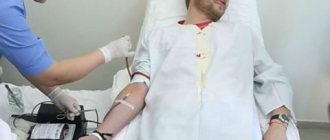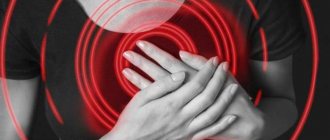Temperature indicators for stroke
Temperature readings during a stroke are not the main sign of the disease. Neurological manifestations come to the fore in symptoms and treatment.
The stroke itself in the first minutes usually does not cause a critical or diagnostically significant deviation in body temperature.
During the first hours from the onset of a brain stroke with a hemorrhagic form of the disease, the temperature gradually rises, and after 2-3 hours it can reach 38 degrees. A temperature of 37.2 degrees is considered the norm for a hemorrhagic stroke; exceeding this indicator worsens the patient’s chances of recovery.
With the ischemic type of disease, body temperature usually drops to 36 degrees. If the readings do not fall below this level, you can hope for successful treatment of the stroke.
We recommend reading - Stroke - first signs, symptoms, treatment and consequences
How to overcome it?
Temperature management is considered an important component of stroke care.
It is recommended to treat body temperature above 37.5 C with a search for possible infection and antibiotic therapy:
- To reduce fever, Acetaminophen (Paracetamol) is recommended, with dosages adjusted for specific cases. Approximate dosages of Acetaminophen are 325-1000 mg every 4-6 hours up to 6 times a day (but not more than 4 g/day) at temperatures above 38.6C.
- If the body temperature is high, antipyretics (antipyretics) are recommended for both ischemic and hemorrhagic strokes. The temperature threshold and treatment strategy in this case are selected individually.
Treatment of elevated body temperature during a stroke is recommended only in its acute period.
It is emphasized that there is currently no evidence that lowering body temperature in febrile or afebrile patients improves neurological outcome.
Causes of hyperthermia
If the focus of impaired blood circulation is located in the hypothalamus and/or brain stem, then hyperthermia will be a mandatory symptom of a stroke.
The hypothalamus is responsible for thermoregulation of the body; damage to this part of the brain leads to pathological changes in heat exchange rates.
There is another reason for high temperature during a stroke. Sometimes a brain stroke occurs against the background of acute inflammatory processes in the body, for example, influenza, pneumonia, etc. Hyperthermia in such cases is caused by the body’s fight against an infectious pathogen.
Valid values
If a stroke occurs, the temperature may be slightly reduced to 36.0 degrees. This is explained by decreased blood flow and is a favorable diagnostic criterion. Hyperthermia up to 37.5 degrees is considered acceptable. A temperature during a stroke of 38 and above indicates extensive hemorrhage and the development of necrotic processes. The higher this indicator, the worse the prognosis for the patient.
As fever develops, oxidative reactions accelerate and tissue oxygen demand increases. Reflexively, for every additional degree the heartbeat increases by 10 beats. Breathing also increases.
Why is hyperthermia dangerous?
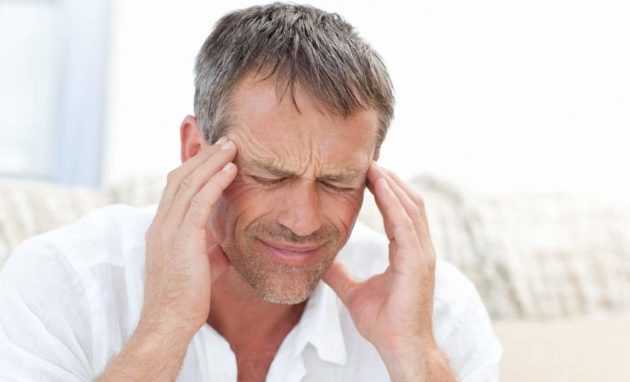
Hyperthermia during a stroke is a dangerous phenomenon that worsens the course of the disease and reduces the chances of restoring health after a brain stroke.
In the cells of brain tissue during hyperthermia, metabolism and tissue respiration accelerate. These processes require an increased flow of oxygen, but with the disease the opposite phenomenon occurs - oxygen starvation.
Hyperthermia during a stroke leads to faster death of brain cells and significantly increases the focus of ischemic damage.
An increase in temperature contributes to the development of inflammatory processes, necrosis, disorders of cerebral regulation, damage and changes in the brain matter. In severe cases, high fever can be fatal.
Causes of fever and consequences of this condition
Hyperthermia during a stroke can occur for the following reasons. When a hemorrhage occurs in the brain stem. This area is responsible for thermoregulation; if it is damaged, a sharp increase in body temperature is possible. In some cases, the occurrence of this condition is facilitated by the resorption of damaged cells.
Activation of pathogenic organisms in the body under the influence of stroke. Brain edema and thrombosis, which slow down blood flow, which contributes to an increase in intoxication in cells . Exacerbation of diseases such as pneumonia, infections of the genitourinary system and pathologies of the cardiovascular system.
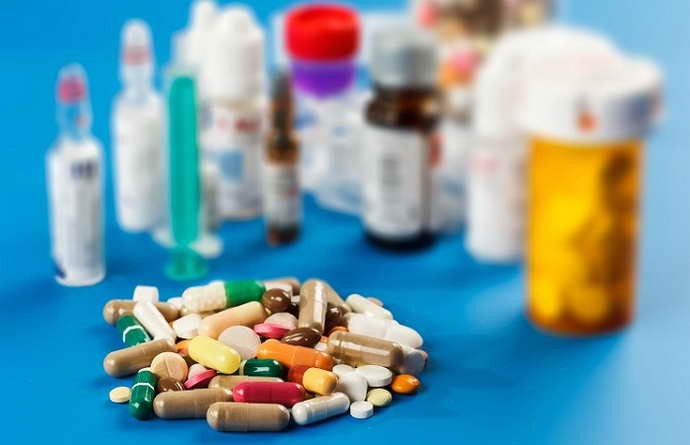
Allergy to medications. When the temperature rises after a stroke, this reason is the most favorable, since the patient’s chances of survival remain quite high. It is only important to replace unsuitable medications in a timely manner.
Knowing about these negative factors, doctors try to carefully monitor the condition of patients and promptly take the necessary measures to prevent hyperthermia. The consequences of such a condition can be dire.
With a sharp increase in body temperature, the following processes begin to increase in the body:
- Intercellular metabolism is significantly enhanced, which negatively affects brain cells that experience severe oxygen starvation. Symptoms of intoxication also begin to increase.
- Tissue necrosis gradually increases, the affected area increases.
- The gray matter receives damage, under the influence of which it begins to change and gradually die. All this leads to the death of brain cells, which increases the risk of death.
If the patient manages to survive, there is a high risk that he will be disabled for life and will not be able to care for himself. In severe cases, patients often fall into a coma.
Temperature during stroke
In the first days after a brain stroke, doctors fight for the patient’s life and normalization of his basic physiological indicators. The patient experiences unstable temperature, high blood pressure, rapid heart rate, rapid breathing, etc.
The temperature often rises after a stroke. Hyperthermia during this period can be due to a number of reasons, the main ones being:
- extensive brain damage due to ischemic attack;
- inflammation around the damaged area of the brain;
- infectious complications after a stroke (pneumonia, etc.);
- exacerbation of chronic diseases;
- inadequate patient care.
An important indicator is body temperature after a stroke
A decrease or increase in body temperature after an acute cerebrovascular accident is an unfavorable sign, as it disrupts the recovery processes of brain cells. Hyperthermia can be of cerebral origin in the early period or the result of infection at a later stage.
Read in this article
The body's thermoregulation center is located in the hypothalamus (diencephalon area). With hemorrhage or ischemia of brain tissue, there may be damage to it, which is reflected in changes in body temperature. In addition, hypo- and hyperthermia are common reactions of the body to stress, infections, and drug therapy.
Good afternoon, Alexander!
My husband had an ischemic stroke two months ago, after which the left side lost motor activity. The pressure was 220/120, during hospitalization they did a kidney examination and found two extra arteries in the left kidney, they concluded that this was the cause of high blood pressure.
Now the pressure is at 160/95. We have already completed a rehabilitation course in the hospital and are preparing to go to bed again. But over the last week the temperature began to rise to 38, at intervals of two to three times a week. No more symptoms! Could the temperature be associated with high blood pressure? What tests need to be done to find out?
Thanks in advance for your answer!
Hello. Temperature rises up to 38 degrees may be associated with a secondary infection, which often occurs in bedridden patients. If after a stroke a person is limited in movement, then he may have the following complications associated with prolonged lying down:
- congestive pneumonia
- urinary tract infections (especially if a urinary catheter was installed)
- trophic disorders of soft tissues (bedsores)
First of all, you must have a doctor who will prescribe and interpret the results of laboratory tests. A general blood test, biochemical blood test, general urinalysis, chest x-ray, ultrasound of the abdominal organs and kidneys can help in finding possible sources of increased temperature.
Sincerely, neurologist Postnikov Alexander Yurievich.
Treatment of hyperthermia
Treatment of hyperthermia during stroke is carried out with the help of antipyretics - medical antipyretics. The doctor prescribes medications individually for each patient. It is advisable to use Paracetamol, Aspirin, Ibuprofen. It is prohibited to use strong analgesics and antibacterial agents.
Cold compresses are used as additional treatments for high fever after a stroke.
During the rehabilitation period, it is important to follow all doctor’s recommendations. If the body temperature rises, give the patient only those anti-hyperthermia medications prescribed by the attending physician, and only when necessary.
Do not self-medicate, do not offer the patient unverified home recipes, or medications based on the recommendations of other people.
Do not use non-steroidal antipyretic anti-inflammatory drugs, as they improve blood rheology, which provokes bleeding after a hemorrhagic stroke.
You will learn more about how to help a person with a stroke in the following video:
Temperature changes after stroke
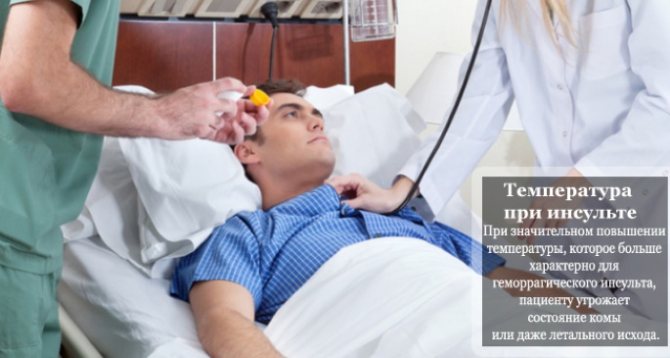
The body's thermoregulation center is located in the brain.
Location: hypothalamus (diencephalon). In acute ischemia or stroke, tissue can be damaged, resulting in hyperthermia or hypothermia. Against the background of high temperature, organic disorders worsen, and the prognosis for recovery becomes unfavorable. A decrease in temperature indicates brain damage in the hypothalamus area. Attention!
Hyperthermia is one of the signs of hemorrhagic stroke.
Fever
It is dangerous for the patient if the temperature exceeds 37.4°C. Dysfunctions of the psyche, memory, and metabolic processes occur. The greatest danger is an increase in the first day after an attack and within 1 month of the post-stroke state. At the initial stage, the inflammatory reaction is the body’s response to hemorrhage in the brain tissue, causing the destruction of a large number of cells.
Later, the cause of hyperthermia can be:
- inflammatory processes - pneumonia, infection of bedsores, deep vein thrombosis - caused by the need for temporary immobility;
- pyelonephritis or cystitis;
- tissue necrosis.
Sometimes a stroke is a trigger for the activation of chronic infectious foci. Tonsillitis, arthritis, gout, etc. become worse.
Against the background of inflammation, rehabilitation slows down, neurons die, due to disruption of metabolic processes, intercellular fluid accumulates in the brain tissue and edema occurs, free radicals are activated, membrane receptors are destroyed, and hypoxia increases. Hyperthermia doubles the mortality rate of patients, and the risk of blood clots increases. The longer it takes to get rid of hyperthermia, the worse the prognosis for recovery.
Low temperature
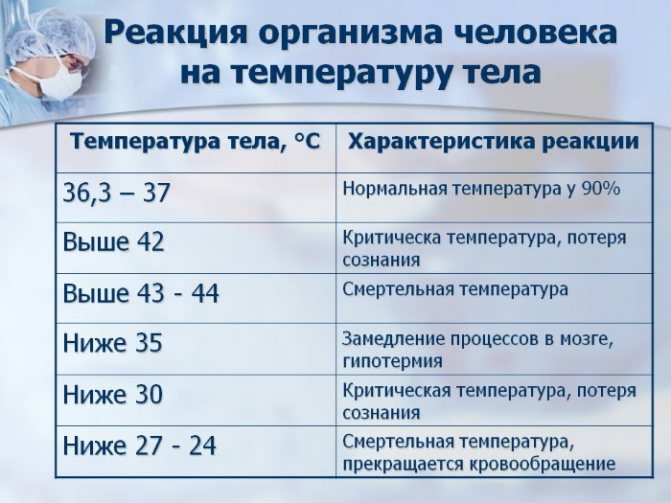
A decrease in temperature at the acute stage is a protective reaction of the body. To reduce the likelihood of death and limit the focus of destruction and prevent the occurrence of edema, they even use a procedure - craniocerebral hypothermia, brain cooling.
During the rehabilitation period, a decrease in temperature is caused by:
- atherosclerosis;
- dysfunction of the adrenal glands or thyroid gland;
- migraine;
- secondary infection with reduced immunity.
The temperature after a stroke drops below 36°C in old age, with a decrease in blood glucose levels, against the background of drug therapy - due to the use of opium painkillers, antipsychotics, antidepressants, antipsychotics and sedatives.
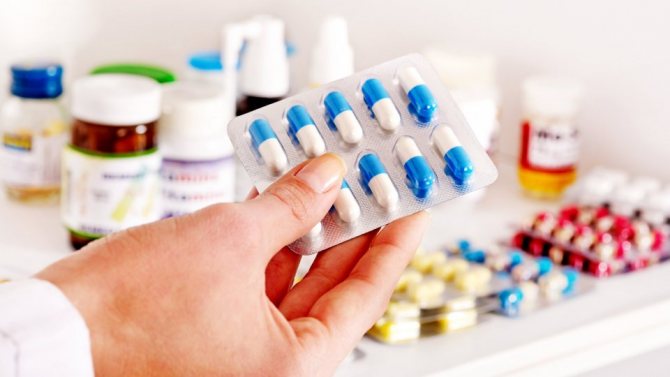
But if hypotension immediately after a stroke improves the condition, then the inability to increase the temperature within 10-12 days causes a negative effect. The rate of metabolic processes decreases and hypoxia increases, arrhythmia occurs, the acid-base and electrolyte balance of the blood changes, and blood clotting decreases. Due to dysfunction of the liver, metabolic products accumulate in the body, and intoxication increases.
Ways to eliminate hyperthermia
High temperature during a stroke does not always decrease after taking antipyretic anti-inflammatory drugs. This is explained by the mechanism of action of the drug; it is based on suppressing the synthesis of substances that promote the production of IL-1. In case of cerebral hemorrhage or ischemia, the increase in temperature has a central mechanism. Leukocytes can be activated and produce interleukin in the event of necrotic processes.
In a hospital setting, lytic mixtures - solutions for intravenous administration - are used to eliminate fever. Even saline solution administered by drip reduces fever due to its lower temperature relative to the blood.
At home, while the ambulance is traveling, you need to remove warm clothes from the patient, do not cover them. You can wipe the areas where large vessels adhere to the skin with cool water. This is the neck area, elbow bends, popliteal fossae.
Fever after a stroke is often caused by infection. Therefore, for treatment, the doctor may prescribe non-steroidal anti-inflammatory drugs (Paracetamol, Ibuprofen, Indamethacin). Antibiotic treatment should be prescribed by a doctor after examination.
Read what dizziness after a stroke means: causes, treatment.
Find out which diet after a stroke will help patients.
How does breathing exercises after a stroke help patients maintain their cardiovascular system?





